L'un des moyens les plus sûrs d'obtenir le Viagra original est de l'acheter surPharmacie Francieen ligne.
All Stories
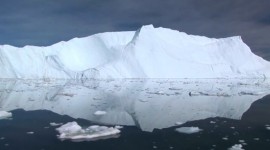
National Climate Assessment: Alaska chapter
“Things are happening now, and they’re not little things. They’re big things.” Sarah F. Trainor, a convening lead author for the National Climate Assessment’s Alaska chapter, talks about how Alaska has warmed twice as fast as the rest of the nation, bringing widespread impacts. Sea ice is rapidly receding and glaciers are shrinking. Thawing permafrost […]
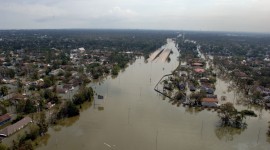
National Climate Assessment: Southeast chapter
The Southeast region faces three main climate change vulnerabilities: sea level rise and associated coastal impacts; increasing temperatures; and water availability. These impacts are already affecting everything from energy production to the economic cost of rebuilding after storms. “Climate change is not something in the future,” says Lynne Carter, convening lead author of the National […]
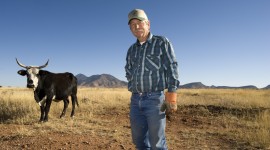
National Climate Assessment: Rural Communities chapter
The U.S. is still predominantly a rural country, even though most of its population lives in cities. Rural America supplies the rest of the country with food, fiber, energy, and many other benefits, and “climate change is hitting those rural areas in ways that will disrupt most of those relationships,” says David Hales, convening lead […]
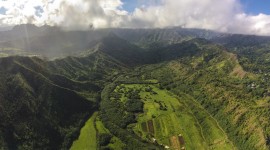
National Climate Assessment: Hawai‘i chapter
The Pacific Islands, including Hawai‘I, American Samoa, and parts of Micronesia, are home to many cultures whose lives depend on the ocean and how they interact with their environment. Climate changes that reduce the productivity of coral reefs and produce rising sea levels will have wide-reaching impacts. People from low-lying islands will likely migrate to […]
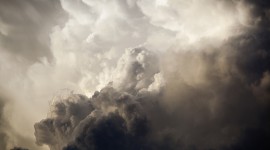
National Climate Assessment: Climate Science chapter
“It’s very clear to us that the climate is changing, changing rapidly, and changing primarily because of human activities,” says Don Wuebbles, a convening lead author on the National Climate Assessment’s Climate Science chapter. A wide range of scientific observations has shown that as the planet’s temperature has risen, there have been changes in precipitation […]
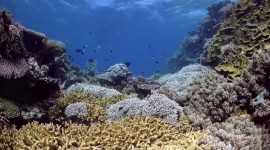
National Climate Assessment: Oceans chapter
“If the average temperature of a large body of water increases, that’s an enormous amount of heat content,” says Andrew Rosenberg, a convening lead author of the National Climate Assessment’s Oceans chapter. Ocean waters are becoming warmer and more acidic, broadly affecting ocean circulation, chemistry, ecosystems, and marine life. Rising sea surface temperatures have been […]
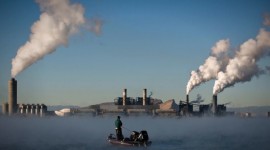
National Climate Assessment: Health chapter
“We have to start connecting the dots between climate change and human health,” says Kim Knowlton, a convening lead author of the National Climate Assessment’s Human Health chapter. Climate change threatens human health and well-being in many ways, including impacts from increased extreme weather events, wildfire, decreased air quality, and illnesses transmitted by food, water, […]
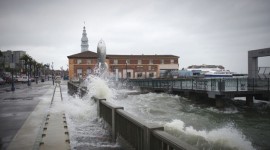
National Climate Assessment: Coasts chapter
“We are a coastal country,” says Susanne C. Moser, a convening lead author for the National Climate Assessment’s Coasts chapter, with 94,000 miles of coastline and more than $1 trillion in coastal infrastructure. Coastal lifelines, such as water and energy infrastructure, and nationally important assets, such as ports, tourism, and fishing sites, all are increasingly […]
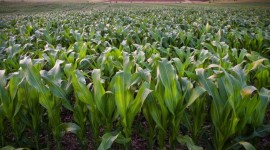
National Climate Assessment: Agriculture chapter
“This isn’t just about plants and animals. It’s about people, it’s about societies,” says Gene Takle, a convening lead author of the National Climate Assessment’s Agriculture chapter. Climate disruptions to agriculture have increased, and many regions will experience declines in crop and livestock production from increased stress due to weeds, diseases, insect pests, and other […]
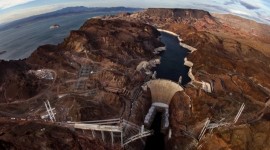
National Climate Assessment: Southwest chapter
“The story in the Southwest is the story of water.” National Climate Assessment Southwest chapter convening lead authors Gregg Garfin and Guido Franco discuss how climate change is affecting the Southwest, already one of the driest regions in the United States. Increased heat, drought, and insect outbreaks, all linked to climate change, have increased wildfires. […]
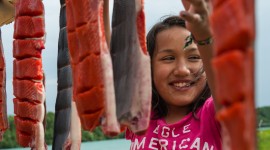
Putting up the Fish – A Salmon Tradition at Risk
Nondalton, Alaska is a traditional Athabascan village whose residents have lived off the land for 10,000 years. June Tracey tells us about fish camp, the places each year Nondalton residents go to “put up their fish.” The annual salmon run is central to the native culture and diet, but a looming threat could bring an […]
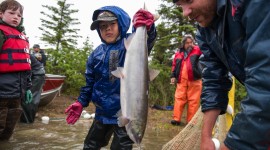
In the Heart of Alaska’s Salmon Stronghold
The fishing village of Nondalton, Alaska sits 14 miles away from the proposed Pebble Mine site. Water from the site migrates into the lakes and streams surrounding the village, supporting the millions of sockeye salmon that spawn in the area and the natives that live off the fish. The residents worry that a mine in […]
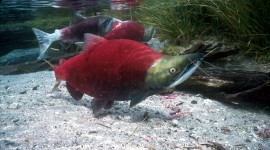
Lost in Migration – Copper’s Threat to Alaska’s Salmon
New science is pointing to a dark future for the Bristol Bay salmon if the controversial Pebble copper mine is developed. This video looks at the effects a massive mine development would have on salmon in Bristol Bay’s most productive sockeye spawning rivers. What science has uncovered are the effects of minute amounts of copper […]
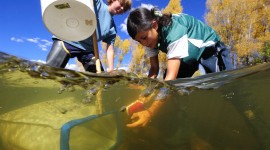
Voices of the Fraser River – A Colorado valley fights for its river
Voices of the Fraser River presents six diverse voices describing the importance of keeping Colorado’s Fraser River flowing and healthy. Denver wants this water and the residents of the Fraser Valley want Denver to hear their stories. The Fraser River flows through Winter Park and is one of the main tributaries to the Upper Colorado […]
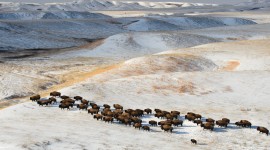
Return of the American Bison
On March 19, 2012, 63 genetically-pure Yellowstone bison were rounded up in a holding facility near Yellowstone National Park and relocated to the Fort Peck Sioux and Assiniboine reservation in northeast Montana. For the first time in more than 100 years, pure wild bison returned to their historic range. For the Native people it was […]
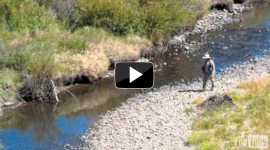
Tapped Out – The Upper Colorado on the Brink
Tapped Out – The Upper Colorado on the Brink
In Colorado, most of the population in Denver and other Front Range cities rely on water diverted through pipelines and tunnels from the Upper Colorado River on the west side of the Continental Divide. Today, most of that water is used to water lawns and gardens. Two new diversions are planned, which will siphon up to 80 percent of the Upper Colorado’s waters. Explore the dilemma of how to provide water to millions without killing the West’s most storied river.
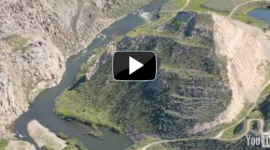
Teton Canyon – A Wild Legacy at Risk
In 1976, a controversial dam on Idaho’s Teton River failed spectacularly, flooding downstream cities and killing 11 people. Three decades later, plans to rebuild the dam have met with stiff resistance from an unusual collection of opponents. Take a trip down this wild river with The Story Group and witness the gorgeous canyon that people want to preserve.
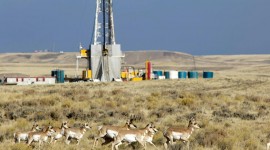
Plight of the Pronghorn
A herd of pronghorn, North America’s fastest land animal, migrates from Wyoming’s Grand Teton National Park into the Upper Green River Valley each year, the longest terrestrial migration in the lower 48. An explosion of natural gas development threatens this ancient migration corridor – and has spurred efforts to preserve it.
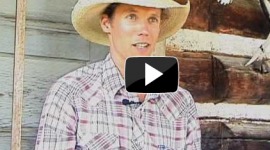
Still Howling Wolf
Since the reintroduction of the gray wolf into the Greater Yellowstone ecosystem, people from around the region have had to learn to live with this predator. Hear from those who live closest to the wolf to see what it’s like to come to terms with canis lupus.
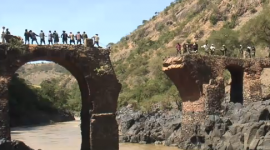
The Blue Nile’s Bridge to Hope
In Ethiopia, villagers living above the Blue Nile River gorge were cut off from roads, towns, school and markets by the raging river. An ancient footbridge with a storied past had been broken for decades, until Ken Frantz and his group Bridges to Prosperity built a new footbridge — and improved the lives of thousands […]
